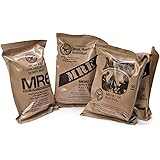Understanding Ham Radios and Their Importance
What are Ham Radios?
Alright, let’s kick things off by diving into what ham radios actually are. In simple terms, these are amateur radio systems that allow individuals to communicate over long distances without the need for a commercial service. It’s like having your own personal radio station, and the best part? It’s all legal as long as you follow the rules!
However, ham radios are not just a hobby; they can be a lifeline in emergencies. Think about natural disasters like hurricanes or earthquakes. Commercial communication lines can easily go down, leaving people in the dark. That’s where ham radios come into play. They allow you to stay connected even when the rest of the world is disconnected.
Plus, the community of ham radio users is incredibly supportive. Whether you’re a newbie or a veteran operator, there’s always someone ready to lend a hand or share their wisdom. That camaraderie is one of my favorite parts of the ham radio world!
Why are Ham Radios Vital for Emergency Situations?
When a disaster hits, people often panic. Communication can become chaotic, and that’s where ham radio operators shine. We’re trained to handle emergencies, relay messages, and provide assistance when it’s most needed. One of my most memorable experiences involved helping someone connect with their family during a major storm, which shows just how important our role can be.
Moreover, ham radios can operate independently of external power sources. Many setups can run on batteries or even solar power. That’s crucial during power outages when cell phones and internet services might be down. It’s empowering to know that you can still reach out and help others, or just check in with loved ones.
Lastly, ham radio operators have access to different frequencies and modes of communication, which can be an advantage in tricky situations. This versatility means you can choose the best method for the circumstance at hand, whether it’s voice communication, text messaging, or even digital data transfer.
Getting Licensed to Operate
So let’s talk about the elephant in the room: licensing. Yes, you do need a license to operate a ham radio, and it might sound daunting, but trust me, it’s easier than you think! The licensing process isn’t just a hurdle; it’s actually a way to ensure everyone understands how to use this powerful tool responsibly.
The first level, the Technician license, is what most beginners go for. It covers the basics of radio operation and some regulations. You can study online or join a local club for help. I went the club route, and it was super fun! Plus, there’s a community vibe that makes studying less boring.
== > What if ... Get a FREE Subscription to PREPARE
Once you’re licensed, you’ll feel a sense of accomplishment. It’s not just about following the rules; it’s about joining a vibrant community of fellow operators. You’ll also learn valuable skills that you can use in real-life situations, especially during emergencies!
Setting Up Your Ham Radio Equipment
Choosing the Right Equipment
When it comes to setting up your rig, the first step is choosing the right equipment. There’s a variety of ham radios on the market, from handheld units to large base stations. Personally, I started with a handheld radio because it was compact and perfect for learning the ropes!
Think about what your needs are. If you’re looking to communicate over longer distances, tabletop units are fantastic. These may require a bit more setup, but they are often more powerful. Don’t forget about accessories like antennas, which can make a huge difference in your communication range!
And let’s not forget about budget! You can find used equipment that works just as well as new gear. Just be sure to check that everything’s in good working order. One of my favorite finds was a second-hand radio that ended up being top-notch!
Setting It Up for Success
Once you’ve got your equipment, it’s time to set it up. This part can be a bit tricky, especially if you’re not tech-savvy. Start by carefully reading the manual; trust me, it makes a world of difference. I learned the hard way by skipping this step and making a few mistakes!
Your location also matters. Make sure to place your radio in a spot with optimal signal reception. Avoid areas with large metal objects nearby that can interfere with signals. If you’re using an outdoor antenna, getting it as high as possible makes a significant improvement.
Lastly, don’t forget to test your setup! Regularly practice using your radio to ensure everything’s functioning. You’ll want to feel confident when it truly matters, so a little practice goes a long way.
Joining the Ham Radio Community
One of the things I love most about ham radio is the sense of community. Joining local clubs or online forums can help you connect with other operators who share your passion. These gatherings can be a great way to learn from experienced hams and share tips and tricks.
I remember attending my first club meeting – it felt like going to a family reunion! Everyone was enthusiastic, sharing stories, and helping each other out. That’s how I learned so much about emergency protocols.
Don’t hesitate to reach out or ask questions. The ham radio community is super welcoming. Attend events, participate in contests, and soon you’ll find yourself surrounded by friends who are just as excited about radio as you are!
Effective Communication in Emergency Scenarios
Importance of Clear Communication
In a high-stress situation like an emergency, effective communication becomes crucial. The first thing I learned was to stay calm and articulate my message clearly. Rushed or unclear messages can cause confusion, potentially leading to more problems.
Use simple language, avoid jargon, and be direct about what you need. When I was giving emergency updates, I always made sure to include essential details like my location and the situation at hand. This clarity can be lifesaving!
Also, don’t just talk – listen too! Make sure to let others relay their messages. Communication is a two-way street, especially during urgency when every second counts!
Get Preparedness and Self-Reliance Tips. Subscribe Now!
Using Proper Protocols
Knowing the correct protocols is a must in an emergency. This includes understanding how to initiate contact and how to end a conversation properly. I remember my first emergency drill; I focused so hard on talking that I forgot to follow protocols! Learning these rules is absolutely crucial for effective communication.
Things like identifying yourself with your call sign and using standard radio lingo help maintain order and ensure everyone is on the same page. It can save time and reduce chatter, which is especially important when many people are trying to communicate simultaneously.
Practice these procedures regularly until it feels second nature. It’ll help you react swiftly and confidently when real emergencies occur. When in doubt, remember: clarity and patience go a long way!
Coordinating with Emergency Services
During emergencies, ham radio operators often work alongside emergency services. Learning how to effectively coordinate with these professionals can make a significant difference. I had the chance to assist during a local emergency response training, and wow, did I learn a lot!
Make sure you’re aware of any local emergency frequencies and protocols. This knowledge can help you provide valuable information to first responders and facilitate swift action.
Always stay respectful and follow their lead. They are there to help, and your role as a ham operator is to support them. Plus, being part of a team effort can be incredibly rewarding!
Practicing Emergency Communication Skills
Regular Drills and Simulations
Practicing is where the rubber meets the road. Regular drills and communications exercises help keep your skills sharp. Join local clubs that frequently organize drills; trust me, being proactive will prepare you for the unexpected!
During a drill, I discovered that coordinating messages across multiple radios was more challenging than I thought! These simulations mimic real-life scenarios and teach you to think on your feet.
Plus, you’ll gain insights into what works and what doesn’t. Over time, this practice will boost your confidence immensely. When the moment arises, you won’t just be ready; you’ll be a rock star!
Learning from Real-Life Experiences
There’s no teacher quite like experience. Whether it’s small personal emergencies or larger events in your community, always take the time to reflect. I remember being shocked at how quickly I fell into a routine during a weather emergency; it was a learning curve!
After each event, review what went well and what could be improved. This reflection helps you distinguish between what you thought was effective and what actually worked.
Sharing experiences with fellow ham radio operators can also foster collective improvement. After all, we’re all in this together, navigating the ups and downs of radio emergencies!
Staying Updated with Training
Finally, never stop learning. The world of ham radios is ever-evolving, and staying current with new technologies and methods is key. Participating in workshops, webinars, and local training sessions ensures you remain informed.
More importantly, these opportunities present chances to network and learn from seasoned pros who’ve been in the game for years. I can’t stress enough how invaluable these connections can be!
The more knowledge you have, the more lives you can potentially impact during real emergencies. Take it from me, the effort you put into learning now will pay off when it truly counts.
FAQ
1. Do I need a license to use a ham radio?
Yes, you need a license to operate a ham radio legally. Starting with a Technician license is recommended for beginners, and the process is quite manageable!
2. How can ham radios help during a natural disaster?
Ham radios function independently of commercial power and services, allowing communication even when everything else fails. They provide a vital means of connection for those in need of assistance.
3. What equipment do I need for basic ham radio communication?
A basic setup can include a handheld radio, a good antenna, and some power supply options. Don’t forget to consider accessories that might improve functionality!
4. How can I join the ham radio community?
Joining local ham radio clubs or online forums is a great place to start! Attend meetings, events, and participate actively to meet fellow enthusiasts and learn more.
5. What should I do if I encounter interference during communication?
If you experience interference, first try changing frequencies. Ensure your antenna is positioned correctly and away from obstructions. If problems persist, consult with more experienced operators for tips!
Get Preparedness and Self-Reliance Tips. Subscribe Now!
Related Content
- What is the best way to prepare for natural disasters?
- The Ultimate Guide to preparedness for grid down in 2025: 10 Effective Strategies
- The Ultimate Guide to Preparedness for Winter Storms: 10 Effective Tips for 2025
- The Ultimate 2025 Guide to Family Emergency Preparedness: 10 Effective Strategies to Protect Your Loved Ones
- Is it necessary to prepare for cyber-related disasters?






